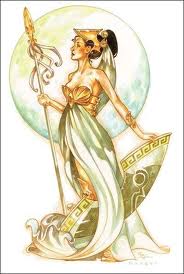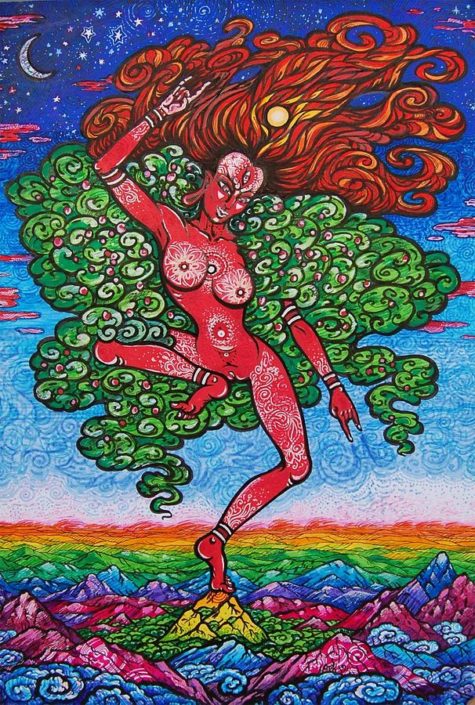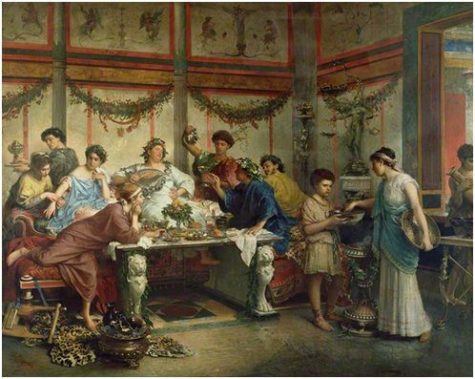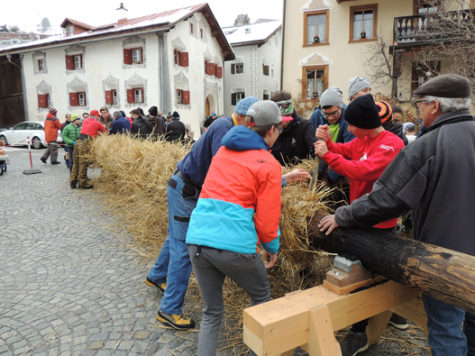February
This article was posted in the The Power Path for February 2019, but I think it’s applicable to the current February as well. Enjoy!
The main theme for February is “ACTIVATION”
It is the energy of a spark, of ignition, of a burst of creativity or destruction. It is a month of passion, friction that causes change, and the adjustment necessary to re-balance and re-group. There is movement and action, and the need to channel this energy constructively for new insights, motivation and productivity.
Emotional discontent fuels the impulse, the friction and the desire for change. It is a time when reconnecting with your passion is not only possible but advisable. What have you denied yourself? The need for adventure this year becomes an ally and the passion mode takes hold. Fortunately, we also have some very grounded aspects that will help tame this potentially volatile energy from frying everything in its path.
Let’s talk about the discontent. There is an aggravated energy that is pushing us towards conflict or breakthrough, new insights and new solutions, and moving us through our discontent and maybe even anger. You must remember to accept this as an important energy that creates the necessary friction for a spark to take place that ignites a circumstance that creates a window for something new to happen and a resolution to be found.
The discontent can hit your emotional, intellectual or moving center. Discontent in the emotional center is more likely this month as we are still working through old emotional debris. Purely intellectual discontent does not usually have a charge. The charge is the emotional aspect of the discontent. The best thing to do is to observe it first, then ask what it is related to, before you just go off the rails and blame someone or something, then ask for help and support in breaking through to another landscape. (a good exercise is included in our monthly support audio)
This month we are looking at what we have a passion for, what wants to reignite, what demands to be activated, perhaps something that we have denied ourselves or put on the back burner while handling life, karma and other things. For example, if you always wanted to grow vegetables but never had the time, you can set a new intention for that passion this month.
The core of our creative self wants to burst forth into new territory even as we are reluctant on some level to take the leap into that unknown. (there is a good exercise in this month’s support Mp3 that will help you with this)
The key is to keep looking forward instead of chewing on the past and the discontent of what did or did not happen. You can get stuck there and since the energy will activate regardless of your resistance, you may be activating something destructive instead of productive. The creativity of the month makes it possible to not only see things in a new light, but to experience a complete reset in your belief about what is possible. So be optimistic and keep a “don’t know mind” while in total trust that spirit can take care of things in a way that you cannot yet see.
Movement and action are a big part of this month as well. The masculine is engaged, needs a reintroduction, an acceptance and an outlet. What gets activated both emotionally and physically could be an aggressive passionate desire that needs to go somewhere. It needs an intention and it needs a task. Even if that task is back in January still cleaning things out, it is still movement. If nothing else, you need to stay active physically and keep a good physical task in your pipeline.
Make sure to move through any resistance with grace and ease, allowing for the openings and the space for new insights, healing, resolution and growth with as much creativity and enthusiasm, optimism, humor and fun as you can muster.
On the other side of all of this aggravation and discontent is the potential for real growth and evolution leading to greater prosperity and self-realization. Sometime it is realizing what you don’t want and what you have been missing is just the spark you need to get going. It is time to acknowledge what your passion is and allow it to be activated as a viable expression and support in your life.
The Powamu Festival is the mid-winter ceremony and also called the Bean Planting Festival. It is observed in late January or early February. The celebration lasts 8 days and is mainly celebrated by the Hopi Indians in Arizona.
The Hopis call their ancestral spirits, Katchinas. They believe that for 6 months of the year, these spirits leave their mountain homes and visit the tribe. When they do this, they bring along with them good health to the Hopi and rain for their crops. The Powamu Festival celebrates the spirits return, just like the Niman Katchina ceremony in July celebrates their departure.
The preparations for the ceremony include repainting of the masks that will be worn by those Hopi who impersonate the Katchinas. On the third day, young men bring baskets of wet sand that they leave near the entrance to the kiva, the ceremonial meeting room (see more about this on Wuwuchim page). A hot fire also burns in every kiva of very Hopi village the entire 8 days of the Powamu Festival. Blankets are also stretched across the opening so that the atmosphere inside is similar to a hothouse.
Each man who enters the kiva during this period carries a basket (or bowl) of sand into it. He also plants a handful of beans, which sprout really fast due to all the heat and humidity inside the kiva.
Why bean sprouts? The Hopi believe that bean sprouts represent fertility. Because the Hopi rely strongly on the Katchinas to bring rain (and other good weather conditions) essential to the growth of their crops, bean sprouts also symbolize the approaching spring too.
The Powamu comes to it’s conclusion with a dance that takes place in the nine kivas that dot the northeastern Arizona mesa. The bodies of the dancers are painted red and white and they wear squash blossoms in their hair. These are really yucca fibers twisted into the shape of a squash blossom. They also wear white kilts and sashes, plus leggings with a fringe of shells tied down the side.
The dance takes place inside the hot kiva and is done in two lines. When the dance is over, the dancers then leave for the next village’s kiva, and another group arrives. So, by the time the night is over, each group will have danced at all of the nine kivas.
Then, the Katchinas arrive the next morning wear masks and painted bodies. They bring dolls and rattles for the girls; and, bow and arrows for the boys. Both of the boys and girls get the green bean sprouts that have been growing in the hot kivas.
Clowns run around making jokes, tripping each other and performing pantomines for everyone’s pleasure and fun. The conclusion of the Powamu ends with a feast in which bean sprouts are the main ingredient.
From this time until their departure in July, the Katchinas appear regularly in masked ceremonies performed in the Hopi villages.
The men who impersonate the Katchinas wear masks which vary from year to year. A few of the masks will, however, remain the same. Before the dance, the masks are repainted and refurbished. They are made to fit closely over the head, hiding it totally. There is also a ruff of feathers, fur or spruce at the neck. The face on the mask usually resembles a bird, a beast, a monster or a man or a combination of all of these.
Those who wear the Katchina masks usually also carry an object associated with the being they are suppose to represent (i.e. bow and arrow, a yucca whip or feathers.)
The female Katchinas (who are not really women but are impersonated by the men) wear wigs or long hair styled in flat swirls over the ears known as squash blossoms. This hair style represents virginity.
The Soyokmana is a witch-like creature that carries a crook and a bloody knife. She goes along with the Katchinas as they go from Hopi village to another visiting their kivas. This group also goes from house to house demanding food, receiving gifts and presenting bean sprouts.
When the food they are offered does not meet their requirements, the Katchinas get upset and make hooting and whistling noises and refuse to leave until they have been properly fed! (This sort of reminds me of trick or treating on Halloween.) Sometimes that mean ol’ Soyokamana will use her crook to hook a child around the neck and hold him or her there, screaming in terror. Parents tell their children that this is a punishment for being naughty.
The Flogging Ceremony
Up until a Hopi child is 9 or 10, they believe that the Katchinas are superhuman. So when Hopi children, who have been seeing the Katchinas at many ceremonial dances grow up, they are told that the real Katchinas no longer visit the earth, but are merely impersonated by men wearing masks.
The price for this sudden wisdom is to participate in a ritual flogging or whipping ceremony. Now, the children are NEVER struck hard enough to cause serious injury or pain! This ritual is not intended to be cruel. In fact, sometimes a child who is really frightened, isn’t flogged at all but has a yucca whip whirled over his or her head. Occasionally, an adult will be flogged too, which is believed to promote healing.
For four successive mornings, the child who has been flogged is taken to a special place on the mesa where he or she can make an offering at a shrine and casts meal towards the sun. During the first 3 days of this 4 day period, the child is not allowed to eat salt or meat. But, on the fourth day, these rules are lifted. And, from this time on, the child is now allowed to look at the Katchinas without their masks and at other sacred objects in the kiva without incurring any punishment.
Source: Brownielocks
According to astrological and lunar lore, there are best days for doing a variety of tasks. The best days listed here are based on both the phase of the moon and its position in the zodiac. Many people believe that if you do the tasks on the dates listed, you will get the best results possible.
February 1:
- Castrate Farm Animals
- Mow Grass (to slow growth)
- Plant Root Crops
- Potty Train a Child
- Prune Trees
- Wean a Baby or an Animal
February 2:
- Castrate Farm Animals
- Mow Grass (to slow growth)
- Plant Root Crops
- Potty Train a Child
- Prune Trees
- Wean a Baby or an Animal
February 3:
- Castrate Farm Animals
- Cut Hair (to slow growth)
- Dig Post Holes
- Harvest
- Kill Plant Pests
- Make Jams and Jellies
- Mow Grass (to slow growth)
- Paint
- Potty Train a Child
- Quit Smoking
- Start Diet (to lose weight)
- Wash Wooden Floors
- Wean a Baby or an Animal
February 4:
- Castrate Farm Animals
- Cut Firewood
- Dig Holes
- Kill Plant Pests
- Mow Grass (to increase growth)
- Paint
- Potty Train a Child
- Wean a Baby or an Animal
February 5:
- Castrate Farm Animals
- Cut Firewood
- Cut Hair (to increase growth)
- Dig Holes
- Get Married
- Mow Grass (to increase growth)
- Plant Above Ground Crops
- Potty Train a Child
- Start Diet (to gain weight)
- Wax Floors
- Wean a Baby or an Animal
February 6:
- Castrate Farm Animals
- Cut Firewood
- Cut Hair (to increase growth)
- Dig Holes
- Get Married
- Mow Grass (to increase growth)
- Plant Above Ground Crops
- Potty Train a Child
- Start Diet (to gain weight)
- Wax Floors
- Wean a Baby or an Animal
February 7:
- Castrate Farm Animals
- Cut Firewood
- Cut Hair (to increase growth)
- Dig Holes
- Get Married
- Mow Grass (to increase growth)
- Plant Above Ground Crops
- Potty Train a Child
- Start Diet (to gain weight)
- Wax Floors
- Wean a Baby or an Animal
February 8:
- Bake
- Cut Firewood
- Dig Holes
- Kill Plant Pests
- Mow Grass (to increase growth)
February 9:
- Bake
- Cut Firewood
- Dig Holes
- Kill Plant Pests
- Mow Grass (to increase growth)
February 10:
- Advertise Something for Sale
- Buy a Home
- Cut Firewood
- Cut Hair (to increase growth)
- Dig Holes
- Get Married
- Mow Grass (to increase growth)
- Paint
- Plant Above Ground Crops
- Wax Floors
February 11:
- Advertise Something for Sale
- Buy a Home
- Cut Firewood
- Cut Hair (to increase growth)
- Dig Holes
- Get Married
- Mow Grass (to increase growth)
- Paint
- Plant Above Ground Crops
- Wax Floors
February 12:
- Advertise Something for Sale
- Cut Firewood
- Cut Hair (to increase growth)
- Dig Holes
- Get Married
- Mow Grass (to increase growth)
- Paint
- Plant Above Ground Crops
- Wax Floors
February 13:
- Cut Firewood
- Dig Holes
- Kill Plant Pests
- Mow Grass (to increase growth)
- Set Eggs
- Travel (for pleasure)
February 14:
- Cut Firewood
- Dig Holes
- Kill Plant Pests
- Mow Grass (to increase growth)
- Set Eggs
- Travel (for pleasure)
February 15:
- Bake
- Cut Firewood
- Cut Hair (to increase growth)
- Dig Holes
- Get Married
- Mow Grass (to increase growth)
- Plant Above Ground Crops
- Plant Flowers
- Plant Seed Beds
- Start Diet (to gain weight)
- Wax Floors
February 16:
- Bake
- Cut Firewood
- Cut Hair (to increase growth)
- Dig Holes
- Get Married
- Mow Grass (to increase growth)
- Plant Above Ground Crops
- Plant Flowers
- Plant Seed Beds
- Start Diet (to gain weight)
- Wax Floors
February 17:
- Cut Firewood
- Dig Holes
- Get Married
- Kill Plant Pests
- Mow Grass (to increase growth)
- Paint
- Travel (for pleasure)
February 18:
- Cut Firewood
- Dig Holes
- Get Married
- Kill Plant Pests
- Mow Grass (to increase growth)
- Paint
- Travel (for pleasure)
February 19:
- Kill Plant Pests
- Mow Grass (to slow growth)
- Quit Smoking
- Slaughter
- Start Diet (to lose weight)
February 20:
- Kill Plant Pests
- Mow Grass (to slow growth)
- Quit Smoking
- Slaughter
- Start Diet (to lose weight)
February 21:
- Cut Hair (to slow growth)
- Mow Grass (to slow growth)
- Plant Flowers
- Plant Root Crops
- Slaughter
February 22:
- Cut Hair (to slow growth)
- Mow Grass (to slow growth)
- Plant Flowers
- Plant Root Crops
- Set Eggs
February 23:
- Can Fruits and Vegetables
- Hunting
- Make Jams and Jellies
- Mow Grass (to slow growth)
- Plant Root Crops
- Plant Seed Beds
- Prune Trees
- Set Eggs
- Transplant (seedlings and plants)
February 24:
- Can Fruits and Vegetables
- Hunting
- Make Jams and Jellies
- Mow Grass (to slow growth)
- Plant Root Crops
- Plant Seed Beds
- Prune Trees
- Transplant (seedlings and plants)
February 25:
- Advertise Something for Sale
- Castrate Farm Animals
- Cut Hair (to slow growth)
- Demolition
- Dry Fruits and Vegetables
- Kill Plant Pests
- Mow Grass (to slow growth)
- Pick Apples and Pears
- Potty Train a Child
- Quit Smoking
- Start Diet (to lose weight)
- Wash Windows
- Wash Wooden Floors
- Wean a Baby or an Animal
February 26:
- Advertise Something for Sale
- Castrate Farm Animals
- Cut Hair (to slow growth)
- Demolition
- Harvest
- Kill Plant Pests
- Mow Grass (to slow growth)
- Pick Apples and Pears
- Potty Train a Child
- Quit Smoking
- Start Diet (to lose weight)
- Wash Windows
- Wash Wooden Floors
- Wean a Baby or an Animal
February 27:
- Advertise Something for Sale
- Castrate Farm Animals
- Cut Hair (to slow growth)
- Demolition
- Harvest
- Kill Plant Pests
- Mow Grass (to slow growth)
- Pick Apples and Pears
- Potty Train a Child
- Quit Smoking
- Start Diet (to lose weight)
- Wash Windows
- Wash Wooden Floors
- Wean a Baby or an Animal
February 28:
- Castrate Farm Animals
- Mow Grass (to slow growth)
- Plant Root Crops
- Potty Train a Child
- Prune Trees
- Wean a Baby or an Animal
Source: The Farmer’s Almanac
Dakini day, celebrated on the 25th day of each lunar month in Vajrayana Buddhist traditions, celebrates the feminine energy of wisdom. Devoted Buddhists will celebrate with a Tsok (Tsog), a feast including food, singing, a group (or single) sadhana full of sound and celebration. Most Tibetan Buddhist temples and meditation centers try to arrange a monthly Tsog on this day each month, with celebrants bringing food as offerings. It is always a happy day, that invites blessings not only for the attendees, but for all sentient beings.
This is one of the special days during a month, when Vajrayana practitioners perform a ritual of offering and purification of their commitments. It is believed that on this particular day, all the Dakinis gather in special sacred places and their energy is potently vivid and present at that moment.
When we perform practice on those auspicious days, we can connect with this potent energy and thus gain a lot of merit. It allows us to develop our practice and capacities, as well as purify our defilements and mistakes that we have accumulated with time. In this way, Dakini Day becomes very important for Vajrayana practitioners.
What is a Dakini?
The Dakini is a female being of generally volatile temperament, who acts as a muse for spiritual practice. Dakinis can be likened to elves, angels, or other such supernatural beings, and are symbolically representative of testing one’s awareness and adherence to Buddhist tantric sadhana.
Dakinis are portrayed as elusive, playful and often fierce and naked to symbolically convey how elusive true Wisdom encompassing “Emptiness” can be.
Without contradiction to their role as exemplars of Emptiness, Dakinis can also represent fierce activities, such as protection — the ferocious protective love of a mother.
Khandro Rinpoche defines the authentic Dakini principle as “a very sharp, brilliant wisdom mind that is uncompromising, honest, with a little bit of wrath.”
Dakinis appear in many forms. “The Dakinis are the most important elements of the enlightened feminine in Tibetan Buddhism,” says American teacher Tsultrim Allione. “They are the luminous, subtle, spiritual energy, the key, the gatekeeper, the guardian of the unconditioned state. If we are not willing to invite the Dakini into our life, then we cannot enter these subtle states of mind. Sometimes the Dakinis appear as messengers, sometimes as guides, and sometimes as protectors.”
Dakini are timeless, inorganic, immortal, non-human beings who have co-existed since the very beginning with the Spiritual Energy. In some New Age belief systems, they are angelic. This New Age paradigm differs from that of the Judeo-Christian by not insisting on angels being bona fide servants of God.
Moreover, an angel is the Western equivalent of a Dakini. The behavior of Dakini has always been revelatory and mysterious; they respond to the state of spiritual energy within individuals. Love is their usual domain – one explanation for Dakini or angels supposedly living in the sky or heaven. Manifestations of Dakini in human form occur because they supposedly can assume any form. Most often they appear as a human female. By convention, a male of this type is called a ‘Daka’.
In Buddhism, typically, the male Buddhas represent compassionate means, while the female Buddhas represent Wisdom. The symbols of bell and vajra (Ghanta and Dorje) represent female wisdom — the bell, which makes the sound of “Emptiness” — and the Vajra, representing compassionate means.
Dakini’s have always been a part of Buddhism, starting with the Jataka’s (stories of Buddha’s former lives) in which “divine beings are described as travelling through the air. In Sanskrit, such a being is called a Dakini, a term generally translated as “space-goer,” “celestial woman,” or “cloud fairy.”
Dakinis are typically thought of as the emanation of the “Enlightened Mind” understanding Emptiness. Another concept usually tied to Dakini practice is “bliss” — the state of blissful awareness of emptiness.
It is a wonderful experience to have a moment that realizes emptiness, a feeling of joy-bliss rather than “nothingness.” This is why Dakinis are often portrayed as active, dancing, joyful or fierce, naked and unencumbered.
Five Dakini Healing Mantra
The meaning of Dakini is the female enlightened energy and the awakened state of consciousness. Therefore, chanting this mantra increases and enhances all enlightened feminine energy.
Bam Ha Ri Ni Sa
The 5 Dakini also represents each of the 5 Elements:
- BAM ~ Buddha Dakini ~ (blue) ~ Mind energy, pacifies Ignorance
- HA ~ Vajra Dakini ~ (white) ~ Body energy, pacifies Anger
- RI ~ Ratna Dakini ~ (yellow) ~ Knowledge/Qualities/Healing, pacifies Ego/Pride
- NI ~ Padma Dakini ~ (red) ~ Speech energy, pacifies Desire
- SA ~ Karma Dakini ~ (green) ~ Action/Removes Obstacles, pacifies Jealousy
This mantra is helpful for all female related health issues, transforms negative emotions, unblocks channels, and balance 5 elements. When chanting this mantra on Dakini Day, the power magnifies ten-fold!
After chanting, blow into a glass of water, which infuses the healing vibration into the water, drink, and continue to enjoy its healing properties.
Sources:
According to various sources, February 26 is Hygeia’s Day. I did not, however, find any specific rituals associated with the Goddess Hygeia. However, because bathing is so fundamental to basic hygeine, and Hygeia is the goddess of Healing and Hygeine, a healing ritual bath seems appropriate.
Healing Ritual Bath
Take a lit silver or white candle, some salt, and a healing oil (such as carnation, violet, sandalwood, or narcissus) into the bathroom. By the candle’s light run a tub of very warm water. Cast some salt into it, add a few drops of healing oil, and then step into the tub.
Relax. Feel the warm salted water sinking into your pores, through your skin, sterilizing the sick or unhappy portions of your body.
Visualize any illness or bad feelings as “black worms” leaving your body. When you feel the water teeming with them, pull the plug and let the water drain out. While it is draining, chant:
The sickness is flowing out of me.
Into the water, down to the sea.
Only when the tub is completely drained stand up. It is best to immediately splash your body with fresh water (a shower is ideal) to remove the last vestiges of the disease of sickness-laden water. Repeat as needed to speed your body’s recovery.
From: Earth Power
Termini in Roman mythology began as boundary markers between wilderness settings. The termini were rural boundary stones marking property lines between fields and neighbors. There was an annual ceremony each 23rd day of February called the Terminalia when first fruits were offered and libations of oil and honey were poured over the termini to renew the power or forces within the boundary stones between properties. Ovid presents the story as follows
When night has passed, let the god be celebrated
With customary honour, who separates the fields with his sign.
Terminus, whether a stone or a stump buried in the earth,
You have been a god since ancient times.
You are crowned from either side by two landowners,
Who bring two garlands and two cakes in offering.
An altar’s made: here the farmer’s wife herself
Brings coals from the warm hearth on a broken pot.
The old man cuts wood and piles the logs with skill,
And works at setting branches in the solid earth.
Then he nurses the first flames with dry bark,
While a boy stands by and holds the wide basket.
When he’s thrown grain three times into the fire
The little daughter offers the sliced honeycombs.
Others carry wine: part of each is offered to the flames:
The crowd, dressed in white, watch silently.
Terminus, at the boundary, is sprinkled with lamb’s blood,
And doesn’t grumble when a sucking pig is granted him.
Neighbours gather sincerely, and hold a feast,
And sing your praises, sacred Terminus:
‘You set bounds to peoples, cities, great kingdoms:
Without you every field would be disputed…
These rural termini and feast of landmarks had their state counterpart in Terminus. The story told by Ovid about the sacred boundary stone which stood, in the temple of the Capitoline Jupiter, continues:
What happened when the new Capitol was built?
The whole throng of gods yielded to Jupiter and made room:
But as the ancients tell, Terminus remained in the shrine
Where he was found, and shares the temple with great Jupiter.
Even now there’s a small hole in the temple roof,
So he can see nothing above him but stars.
Since then, Terminus, you’ve not been free to wander:
Stay there, in the place where you’ve been put,
And yield not an inch to your neighbour’s prayers …
~Ovid, Fasti Vol II
A Simple Terminalia Celebration
- Themes: Earth; Home
- Symbols: Owl; Geranium
- Presiding Goddess: Minerva
 About Minerva:
About Minerva:
This Etruscan/Italic goddess blended the odd attributes of being a patroness of household tasks, including arts and crafts, and also being the patroness of protection and war. Today she joins in pre-spring festivities by helping people prepare their lands for sowing and embracing the figurative lands of our hearts, homes, and spirits with her positive energy.
To Do Today:
In ancient times, this was a day to bless one’s lands and borders. Gifts of corn, honey, and wine were given to the earth and its spirits to keep the property safe and fertile throughout the year. In modern times, this equates to a Minerva-centered house blessing.
Begin by putting on some spiritually uplifting music. Burn geranium-scented incense if possible; otherwise, any pantry spice will do. Take this into every room of your home, always moving clockwise to promote positive growing energy. As you get to each room, repeat this incantation:
Minerva, protect this sacred space
and all who live within.
by your power and my will,
the magic now begins!
Wear a geranium today to commemorate Minerva and welcome her energy into your life.
Sources:
The Feralia was the closing festival of the ancient Roman festival of Parentalia. During the Feralia, families would picnic at the tombs of their deceased family members and give libations to the dearly departed. It was believed that the shades of the dead could walk upon the earth above their graves during Feralia.
Roman citizens were instructed to bring offerings to the tombs of their dead ancestors which consisted of at least “an arrangement of wreaths, a sprinkling of grain and a bit of salt, bread soaked in wine and violets scattered about.” Additional offerings were permitted, however the dead were appeased with just the aforementioned.
Ovid tells of a time when Romans, in the midst of war, neglected Feralia, which prompted the spirits of the departed to rise from their graves in anger, howling and roaming the streets. After this event, tribute to the tombs were then made and the ghastly hauntings ceased.
“And the grave must be honoured. Appease your fathers’ Spirits, and bring little gifts to the tombs you built. Their shades ask little, piety they prefer to costly offerings: no greedy deities haunt the Stygian depths. A tile wreathed round with garlands offered is enough, A scattering of meal, and a few grains of salt, and bread soaked in wine, and loose violets: Set them on a brick left in the middle of the path…
…and hide the gods, closing those revealing temple doors, Let the altars be free of incense, the hearths without fire. Now ghostly spirits and the entombed dead wander, Now the shadow feeds on the nourishment that’s offered. But it only lasts till there are no more days in the month Than the feet that my metres possess. This day they call the Feralia because they bear [ferunt] Offerings to the dead: the last day to propitiate the shades.” – Ovid
To indicate public mourning, marriages of any kind were prohibited on the Feralia, and Ovid urged mothers, brides, and widows to refrain from lighting their wedding torches. Magistrates stopped wearing their insignia and any worship of the gods was prohibited as it “should be hidden behind closed temple doors; no incense on the altar, no fire on the hearth.”
Pisces is the twelfth sign of the zodiac. The sun enters Pisces at slightly different times each year, usually around Feb 21, sometimes the day before or the day after.
- Symbol: Two Fish swimming in opposite directions
- Element: Water
- Gemstone: Aquamarine
- Keyword: I Believe
From 365 Goddess, we have this for today:
- Themes: Foresight; Divination; Inspiration; Femininity; Psychic Abilities; Kindness; Tradition
- Symbols: A Cup; Fishes; Water
- Presiding Goddess: Saga
About Saga:
Saga, an attendant of Frigg, is a Scandinavian goddess whose name beans “seeress.” Saga is a student of the Universe, ever watchful and ever instructing us about the value of keen observation. She is directly connected with the sign of Pisces, which governs artistic expression, psychic abilities, and sensitivity towards others’ needs.
In artistic representations, Saga bears a long Viking braid, an emblem of womanhood and honor. According to the Eddas, Saga lives at Sinking Beach, a waterfall, where she offers her guests a refreshing drink of inspiration from a golden cup. Later, her name was applied to the sacred heroic texts of the Scandinavian people.
To Do Today:
Tend your sacred journals today. Write about your path, your feelings, where you see yourself going, and where you’ve been. Saga lives in those words – in your musings, memories, and thoughts – guiding them to the paper to inspire you now and in the future.
Invoke any of Saga’s attributes in your life today simply by practicing the art of observation. Really look at the world, your home, and the people around you. As you do, remember that little things count. Saga’s insight lies in the grain of sand and the wildflower as well as the stars.
More About the Sun in Pisces
The Sun is in Pisces from February 19 to March 20, depending on the year.
- Ruler: Neptune
- Season: Winter
- Modality: Mutable
- Metal: Tin
- Stone: Jade. Coral
- Color: Sea Green
- Flowers: Jonquil; Violet; Poppy
- Anatomy: Feet, Veins
- Attributes: intuitive, dreamy, artistic, humane, sympathetic, sensitive, compassionate, perceptive, tender, impressionable
As the twelfth and last sign of the zodiac, Pisces contains within itself a little experience of all the signs. This gives Pisces Suns the ability to identify with people from all walks of life—from all backgrounds—in some way. These individuals are not only changeable and adaptable, they have open minds and tremendous understanding. But Pisces itself is often misunderstood. Pisces Suns may spend a good portion of their lives yearning for understanding, and the other part in a state of divine discontent. Suffering is sometimes glamorized in the Piscean world.
Sun in Pisces people are frequently pegged as wishy-washy, but this is all a matter of opinion. What you will find behind a vaguely directionless, spacey manner is a deep person with real dreams. Their dreams are more than getting that picket fence or making it up the corporate ladder. Pisces are tuned in to a higher purpose and their dreams transcend the individual. A deep love for humanity, and compassion that knows no bounds is found with this placement of the Sun.
Pisceans are not known to be cutthroat business types, nor are they given to throwing themselves out into the world in an aggressive manner. But make no mistake about it, Pisces can be extraordinarily successful when given the chance to express themselves. The arts, marketing, music, teaching, drama, healing arts…these are all fields in which Pisces can find expression. Their imagination, attunement to humanity, and remarkable intuition endow them with enviable gifts of insight and creativity.
Pisces is a sensitive sign—both sensitive to criticism and sensitive to others’ feelings. Easily touched by human suffering, at least in theory, Pisces wouldn’t hurt a fly. They believe in people, are deeply hurt by compassionless human behavior, and have a hard time saying no. Harsh realities are avoided either through escapist behavior or self-delusion; but every now and again reality does raise its ugly head, and hits Pisces over the head. This is a sad time indeed. Pisces retreats into their own world, self-pitying and giving pep talks to themselves (“I will never trust again!”). Rest assured, though, that these periods are rather short-lived and even useful.
Pisces seems to derive energy from their (generally short) bouts of self-pity. They come back stronger, with a spring in their step, ready to face the world again, and just as, if not more, compassionate and trusting as they were before. Some might even wonder if Pisces finds pleasure in suffering. Sometimes this is the case, but most of the time, Pisces pulls a lot of creative energy from sadness. Pisces is the poet or artist with angst, although this trait is often more apparent with Moon in Pisces.
Some find Pisces’ tendency to be late for appointments, spaced out behavior, and absent-mindedness amount to irresponsibility. Pisces would be shocked to know this, however. Who me? Pisces wonders. Irresponsible? Pisces Suns absolutely care—their love knows no bounds—but their retreats from ordinary life (whether they are as simple as daydreams or actual departures) that they so seem to need every now and again are not always understandable to no-nonsense signs, such as Virgo or Aries.
Many Pisces seem almost allergic to things like shopping lists, maps, directions, and instructions, and for some brave souls, even watches — they prefer to feel their way through life than to follow some plan.
We find plenty of artists, poets, and musicians with Sun (and other personal planets) in Pisces. Piscean themes are woven throughout the songs of Billy Corgan of the Smashing Pumpkins and Kurt Cobain of Nirvana, for example.
Source: Cafe Astrology
Anthesteria, held on February 11th, celebrates the maturing of the wine and the beginning of spring. It’s an Athenian festival in honor of Dionysus, god of the grape harvest, winemaking, and wine. The celebration lasted for three days in the month of Anthesterion (from the Hellenic calendar in ancient Attica).
The word Anthesteria is associated with “flower” or the “bloom” of the grape. A. W. Verrall (Journal of Hellenic Studies, xx., 1900, p. 115) wrote that it was a feast of “revocation” where the dead were recalled to the land of the living.
In ancient Greece, Anthesteria was the name of a festival during which the participants ritually expelled the Keres, evil female spirits, from their houses.
- The First Day
On the first day, called Pithoigia (opening of the casks), wine from the newly opened casks was offered to Dionysus and everyone in the household, including servants and slaves. The home and children were adorned with spring flowers.
- The Second Day
The second day, named Choës (feast of beakers), was for visiting. People dressed for the day, some even dressed as Dionysus. They spent the day visiting friends and family as well as the local drinking clubs were drinking games were held. Some folks offered wine to deceased relatives by pouring libations on the their tombs.
For the state, however, if was a formal day with secret ceremonies in one of the sanctuaries of Dionysus. The basilissa (or basilinna), wife of the archon basileus, would marry the god of wine in a special ceremony. She was assisted by fourteen Athenian matrons, called geraerae, who the basileus chose and swore to secrecy.
Both Pithoigia and Choës were considered unlucky and defiled days that necessitated atoning with libations. From this the souls of the dead would come up from the underworld and walked the earth. People chewed on buckthorn leaves and smeared tar on their doors to protect themselves from evil.
- The Third Day
The third day, Chytri (feast of pots), was a festival of the dead. Cooked legumes were offered to Hermes, son of Zeus, and he would make the souls of the deceased depart.
Sources:
The “L’Hom Strom” festival takes place on the first Saturday in February every year the small community of Scuol in canton Graubünden, (in Switzerland close to the borders of both Austria and Italy). The “hom strom” is the famous “Straw Man of Scuol,” a large dummy.that is set alight.
On the first Saturday in February, young men crack whips to assemble the population, and the youths of Scuol, then go from farm to farm collecting straw which has been hand-threshed and especially prepared for this purpose. The straw is taken down to the village square where the thick strands of rye are then twined around a telephone pole which is almost eight meters (24 ft) long. The work must be done by noon, at which time the bundle should have reached a diameter of approximately two meters.
In the afternoon, a group of adults take the “l’hom strom” to Gurlaina and place the Hom Strom in a specially prepared hole in a field, and there set up ready for burning. The enormous effigy is carefully guarded to protect him so that pranksters – specifically the boys from the next village – cannot light him before his time!
At dusk, the people of Scuol parade through the village streets singing songs on the way to Gurlaina. As night falls, the dummy is burned, accompanied by songs to drive away the winter.When the tower clock strikes eight, the oldest boys throw balls of fire, which are rags drenched in petroleum and which have up to now illuminated the grounds, at the Hom Strom and set him aflame.
At the end of the burning ceremony attending locals sing the fourth stanza of the song Hom Strom written in the 50’s by Men Rauch, born and raised in Scuol, where a Christian adaptation is easily recognizable:
Las flommas van in ot,
portond al Segner lod,
chi’ns dosta dal malom,
eviva nos Hom Strom!!
Translation:
The flames that burn up into the sky,
give praise to the Lord,
who, in turn, protects us from evil,
long live our straw man!!…
The children and adults sing the Hom Strom song, written by a native poet. Half an hour later, the spirit of winter is consumed and everyone walks back to the village. This death by fire symbolizes the rapidly approaching end of winter.
~Info from various sources























